There's a quick and easy test you can do at home, if you have someone to help you, to check if there have been any changes to the feeling in your feet, called the Touch the Toes test.
If you have diabetes, you’re much more likely to develop problems with your feet, especially if you have lost any feeling or sensitivity in them. Testing the feeling in your feet will help you to know if you are at risk of hurting them without noticing.
Why you should test your feet sensitivity
Sensitivity is one way in which your body alerts you to any problems.
Foot pain or feet sensitivity can happen because of a burn, blister, cut, ulcer or even problems with your shoes.
If you have diabetes and lose some feeling in your feet, you may not feel if you’ve been hurt. That could mean you do not get treatment quickly enough, which could lead to serious infections or ulcers. In the worst cases, it can lead to amputation.
Maybe you know that you have less feeling in some parts of your feet? In this case, you need to check your feet every day by looking over them. We’ve got more information to help you take care of your feet.
How to test for feet sensitivity
The Touch the Toes test is quick and easy to do. But you need someone there to help. This might be someone you live with or a close friend you feel comfortable to ask.
Kumar and Alex will show you how to do it in the video below. You can also download full instructions on PDF (PDF, 1MB). We've also set out the steps further down:
{"preview_thumbnail":"/s3/files/styles/video_embed_wysiwyg_preview/public/video_thumbnails/kauYqodCx6w.jpg?itok=qFDaegNC","video_url":"https://www.youtube.com/watch?v=kauYqodCx6w","settings":{"responsive":1,"width":"854","height":"480","autoplay":0},"settings_summary":["Embedded Video (Responsive)."]}
Your helper will touch your toes and write down how many touches you feel. The touch must be very light, and for no more than a second. They should only touch each toe once. It will only take a few minutes:
1. Take off your socks and shoes and lie down on a sofa or bed.
2. Your helper will then remind you which is your right leg, and which is your left leg. They should firmly touch each of your legs, saying, “This is your right” and “This is your left.”
3. Close your eyes and keep them closed until the end of the test.
4. The helper will now lightly touch your toes using their index (pointing/first) finger. They'll touch six toes in this order:
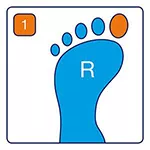
|
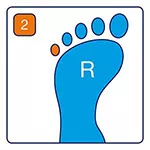
|
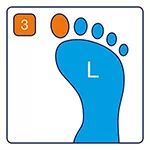
|
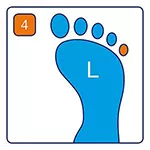
|
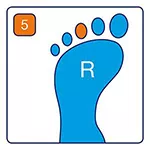
|
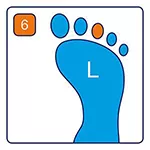
|
5. If you feel the touch you say 'right' or 'left'. If have a loss of sensation you won't feel the touch.
6. Your helper will write down whether you've felt a touch or not.
What does your risk level mean?
If you felt the touch on five or six of the toes, then your sensation is fine. You’re not at an increased risk of developing a foot problem due to a lack of sensation. You must still carry on having your annual foot checks at your GP practice or diabetes clinic. Sensation can change at any time, and you might not notice.
Problems with sensation
If you could only feel four or less toes being touched, you have reduced sensation. And you might be at risk of a foot ulcer.
It’s best to get it confirmed by a healthcare professional. Get an appointment at your GP surgery for a full examination of your feet.
If the results do show that you’ve lost sensation, you should be referred to a diabetes specialist podiatrist, foot protection team, or the diabetes foot clinic. They’ll be able to help you manage the condition.
__________________________________________________________________________________________________________________________
The Touch your Toes test is officially known as the Ipswich Touch Test, which was designed by Gerry Rayman and the team at Ipswich Hospital.
